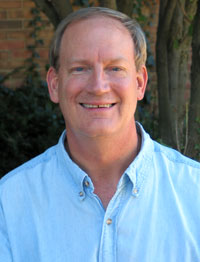 ME Professor Bill Schultz recently returned from a three-year term as as director of the Fluid Dynamics program at the National Science Foundation (NSF) in Washington, D.C. Between September 2006 and August 2009, Schultz oversaw grant programs and funding decisions, and was involved in a variety of other projects within the fluid dynamics field.
ME Professor Bill Schultz recently returned from a three-year term as as director of the Fluid Dynamics program at the National Science Foundation (NSF) in Washington, D.C. Between September 2006 and August 2009, Schultz oversaw grant programs and funding decisions, and was involved in a variety of other projects within the fluid dynamics field.
One of Schultz’s primary responsibilities was the delicate process of attaining more funding for the fluid dynamics community, as well as for engineering and science in general. Because NSF acts as an advisor to Congress, it cannot lobby directly for more federal financial support, so the organization helps the engineering community in its lobbying effort. Part of Schultz’s work included revising grant abstracts to make them more accessible to a less scientific audience, such as Congress and the general public. Schultz worked diligently during his term to increase funding, and his efforts paid off. While his predecessor had approximately $6 million per year to disperse to researchers in the fluid dynamics field, by his third year Schultz’s panel gave away close to $60 million. Some of this increase came from the one-time stimulus funding during his term, and much more resulted thanks to his strong involvement with interdisciplinary research panels such as IGERT, CDI, EFRI, PetaApps, and IDR.
The field of fluid dynamics is an extremely versatile area of research, and its influence extends into many different disciplines. For example, at the University of Michigan, nearly every department in the School of Engineering has a faculty member who specializes in fluid dynamics, such as aerospace and civil engineering. “Fluids compose well over 99.9999 percent of material in the universe,” Schultz explained. “There are so many pressing political issues—like energy, pollution, and diseases—in which fluids play a huge role.”
Schultz’s appreciation for the interdisciplinary nature of fluid dynamics has helped him understand the need for more communication and cooperation between all research fields. During his three-year term as a program director, he was part of the FacTIR (Facilitating Transformative and Interdisciplinary Research) group, which was formed to evaluate unsolicited interdisciplinary proposals. “NSF has been criticized by PIs (principal investigators) and others that it does not adequately review interdisciplinary research proposals,” he said. Schultz was also very involved in sustainability. During his term, he went on a lecture tour to talk about green gasoline and biofuels, and to encourage development of cellulosic gasoline.
Schultz’s tenure at NSF was certainly challenging and at times hectic, but he ultimately describes the experience as “exhilarating.” “Working for NSF helped me get the broader picture,” he said. In his second year, Schultz spent one day out of each week at a different university, discussing policy and funding. He estimates that during the three-year term, he visited at least half of the fifty states. “You get a slightly inflated ego during that time,” Schultz said. “Everyone compliments you on your hair and your clothes, trying to curry favors.” In addition to his duties as program director, Schultz also retained his responsibilities at the University of Michigan. While his first two years were spent living in Washington, D.C., he split his third year between the East Coast and the Midwest. During that time, Schultz spent half the week in Arlington working for NSF and the other half in Ann Arbor.
In general, Schultz is happy with NSF and its funding process. “NSF is a pretty lean organization,” he said. “There are a lot of people working very hard for their communities.” However, he would like to see more rotators in NSF, and of a younger sect. “The permanent employees are even greyer than me. We need more people in the peak of their careers or developing toward it.”
